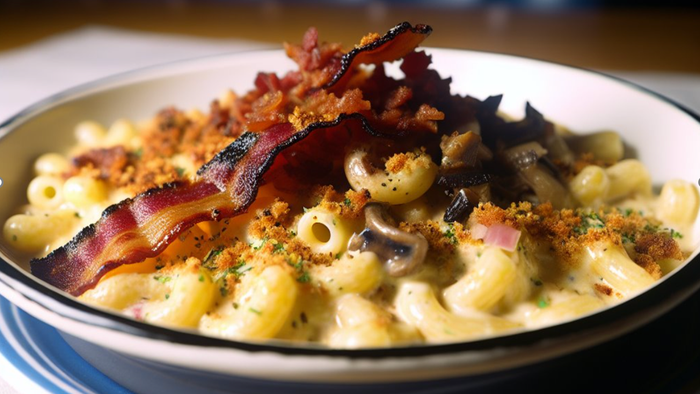Catersource State of the Industry 2024, Part 2: Operations OutlookCatersource State of the Industry 2024, Part 2: Operations Outlook
Editor's Note: This is part 2 in our State of the Industry 2024 series.
January 7, 2025

Editor's Note: This is part 2 in our State of the Industry 2024 series. Check out part 1 here.
The post-pandemic boom may still be in effect (45% of survey respondents saw an increase in events over 2023 while 26% did not see any change), but now the industry is settling into its new normal.
“The catering industry in 2024 was hopeful,” says Christie Altendorf (D’Amico Catering). “With the pandemic wreaking havoc on hospitality that had long-lasting ramifications, 2024 was a year where many organizations were able to settle into what felt something like a new normal. With that normalcy on our side, hope for more stability in the future was able to grow.”
For starters, planning timelines are getting shorter and shorter. Whereas previously caterers had months to plan and execute a corporate event, today they are being tasked to turnaround in mere weeks, and in some extreme cases, even days. In fact, 30% of survey respondents cited this as one of their greatest challenges in 2024.
“It seems to be the year of last-minute booking requests,” said Betty Kalin (Dish Food & Events) during an operations roundtable with the International Caterers Association. “It’s not economic uncertainty anymore, though there may have been an element of that during the pandemic; now what’s really driving the shift is the change in our consumer base and the focus on convenience. Our clients can order anything on their phone, and have it delivered within a matter of hours or within a matter of days, so why not catering? We must decide what is most important to us and what is operationally possible.”
“This shift required caterers to be flexible and fast in order to accommodate shorter lead times,” adds Michael Stavros (M Culinary Concepts). “For many in the industry, the rapid response to these bookings became a crucial part of the business model.”
Meanwhile, costs have risen—everything from staffing to food (28% of survey respondents expect expenditures to increase by an average of 10% in 2025). Caterers are now juggling the need for efficiency while delivering high-end service in an environment where every decision costs more than it used to. Striking the balance between customer experiences and managing costs is more critical than ever. Caterers are navigating these challenges by optimizing their supply chains, exploring cost-effective ingredient alternatives, and offering flexible pricing options. In response to economic pressures, many caterers are also diversifying their services.
“The catering industry is feeling the strain more than ever,” says Lauren Eck (Wolfgang Puck Catering)
For instance, some are expanding into new markets, such as pop-up events or corporate lunch programs, as a way to create additional revenue streams.
“The best part of the year is that brief moment when I can look back at what we have accomplished, and plan for the future. Numbers don’t lie, but if you don’t listen closely they can definitely bamboozle you,” said Craig Cooper (Pinx Catering) in an article for Catersource. “At the end of the year or quarter when you have a moment, take a deep dive into your numbers to understand where your bread is buttered. You will be shocked to find how much money was left on the table. Once you take a look and you identify the opportunities, make a plan and work that plan.”
When exploring what clients are looking for from their events, there’s a clear split in the market: some clients still crave elaborate, high-end events, while others are pushing for simpler, quick-service experiences. In order to address this duality mindset, caterers are having to not only streamline their booking process and their operations, but also their menus.
“Quiet luxury emerged as a major catering trend in 2024 and continues to grow in popularity,” says Meg Grasso (Constellation Culinary Group). “Driven by a demand for refined, upscale food moments that emphasize quality over extravagance. Quiet luxury’s appeal lies in its subtle elegance, catering to discerning clientele who value craftsmanship and a more intimate, immersive dining experience.”

Miniature Quesabirria Grilled Cheese sandwiches from 24 Carrots Catering & Events. Photo courtesy Amelia Lyon
“One of the biggest trends we saw in 2024 was the return to fine dining at weddings,” adds Altendorf. “From restaurant-like atmospheres with cozy banquettes and table lamps, to multiple courses at the table with perfectly paired wines - intuitive table service fueled by warm hospitality took center stage.”
One effective strategy that is gaining momentum is the implementation of smaller menus. It might seem counterintuitive, but simplifying menus can help businesses look after the bottom line while ensuring the customer feels that there is still enough choice on a smaller menu. Embracing the concept of a smaller menu can also lead to cost savings and a more sustainable operation (more on sustainability in a bit).
"Micro menus are on the rise, with smaller, highly curated selections that focus on quality and creativity,” says Chris Sanchez (LUX Catering & Events*). “The challenge is to offer an approachable, casual feel while ensuring guests still have a polished and memorable experience.”
As we look at 2025, the industry may see increased adoption of dynamic pricing models and more robust cost management strategies. Caterers might also focus on developing value-added services that justify higher price points and create a more compelling value proposition for clients.
“We’ve found the key to our growth is responsiveness, as clients are looking to make quick decisions and want all the information upfront,” says Brittney Sogge (Lancer Hospitality). “You have one chance to ‘wow’ them. Speed, responsiveness, and really listening to what our clients need have become the name of the game to harness the short-term business. When we capture their business and show them what we can do, we have repeat clients for life”
*LUX Catering & Events is a proud member of the Leading Caterers of America, a consortium of the top catering and event planners throughout the United States and Canada.



.png?width=700&auto=webp&quality=80&disable=upscale)



